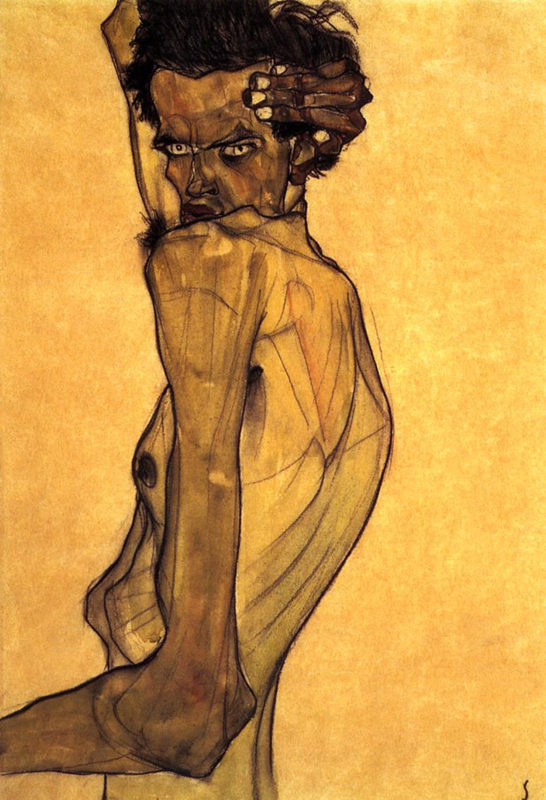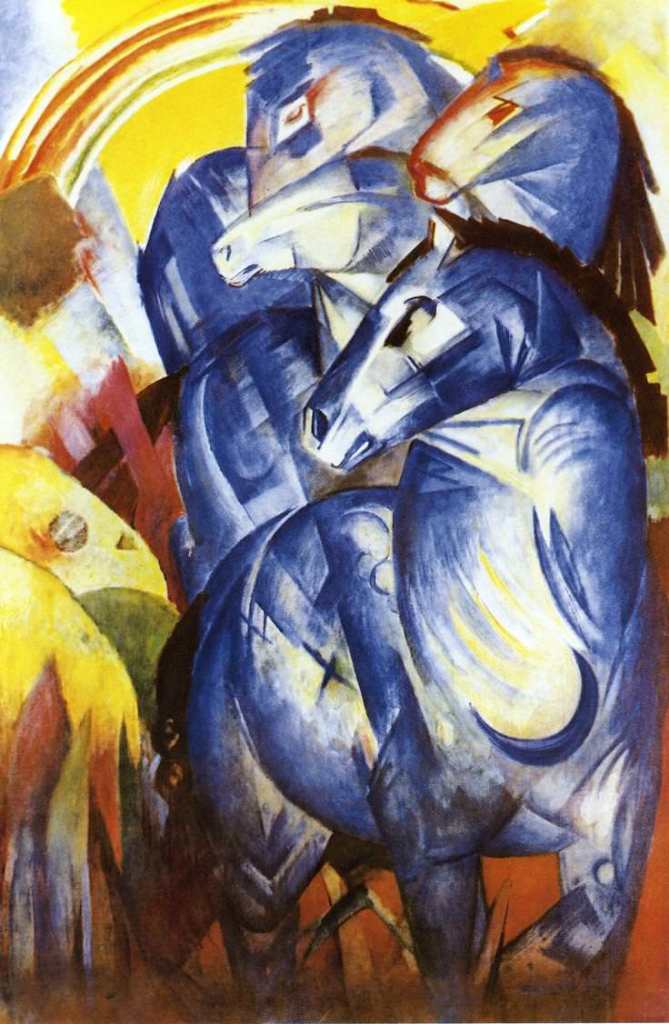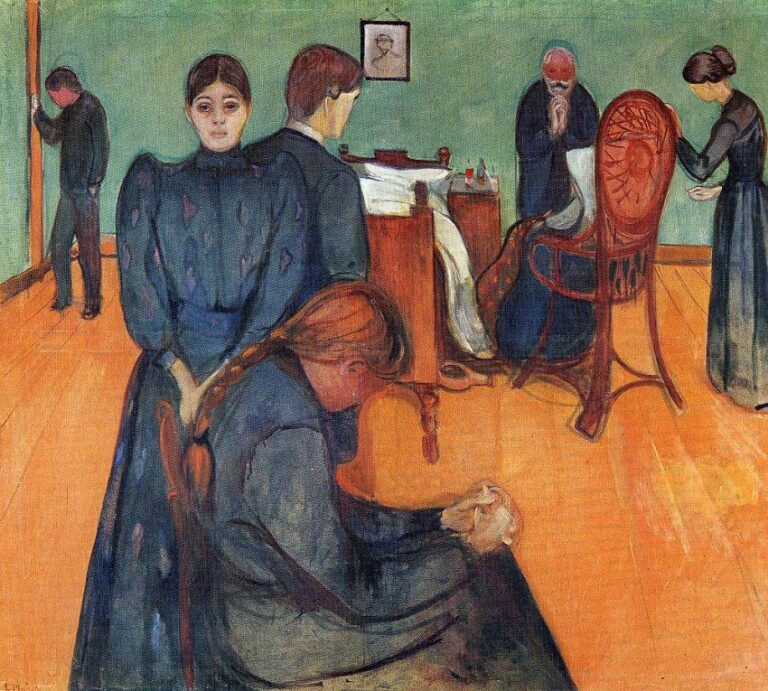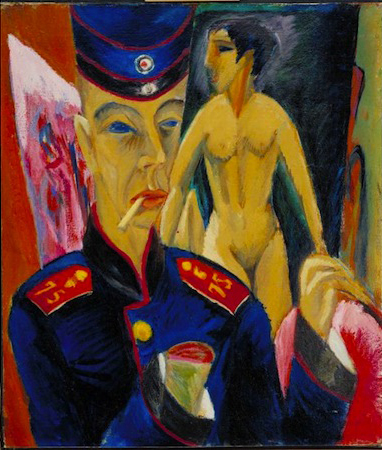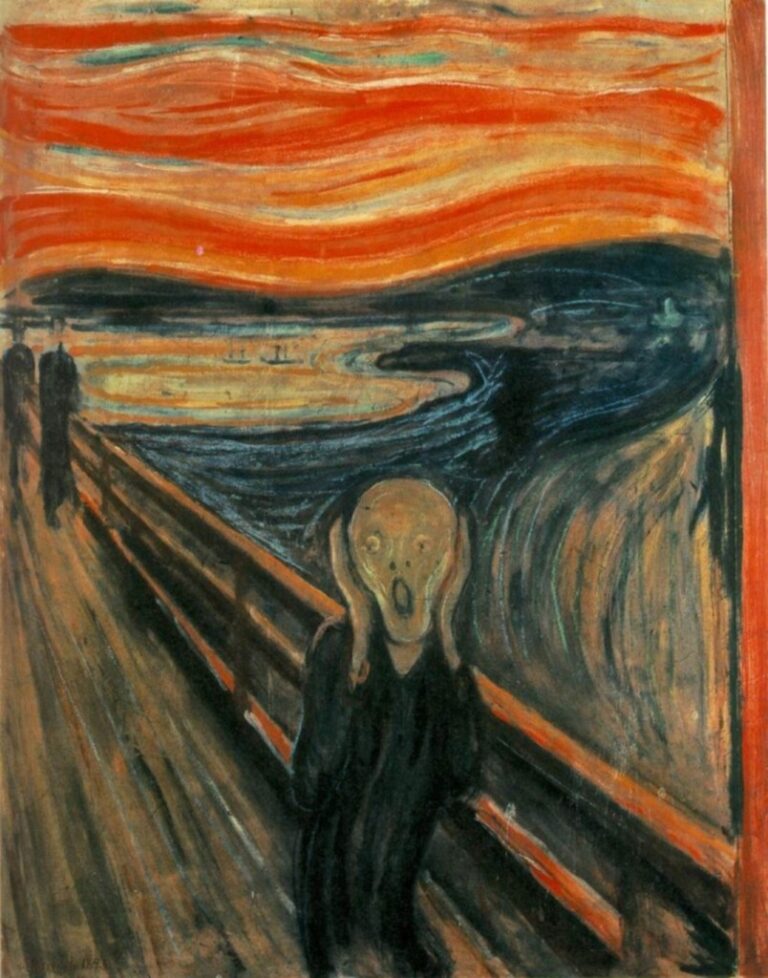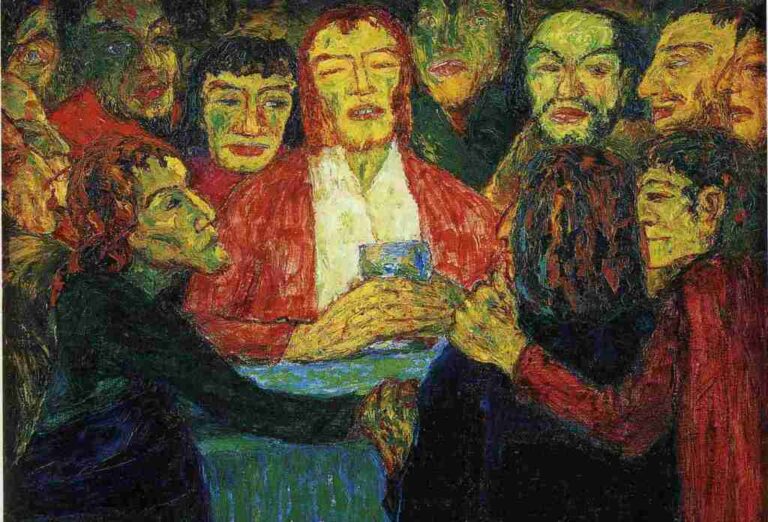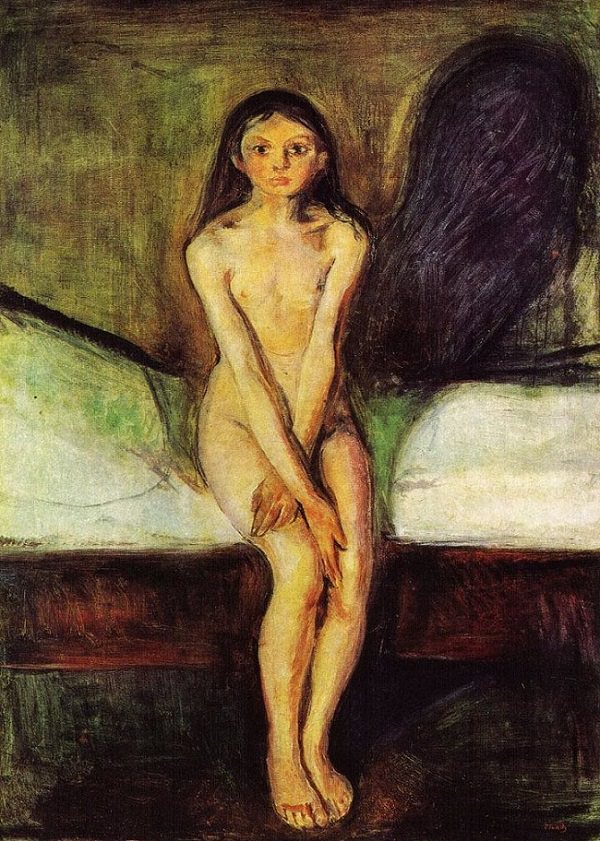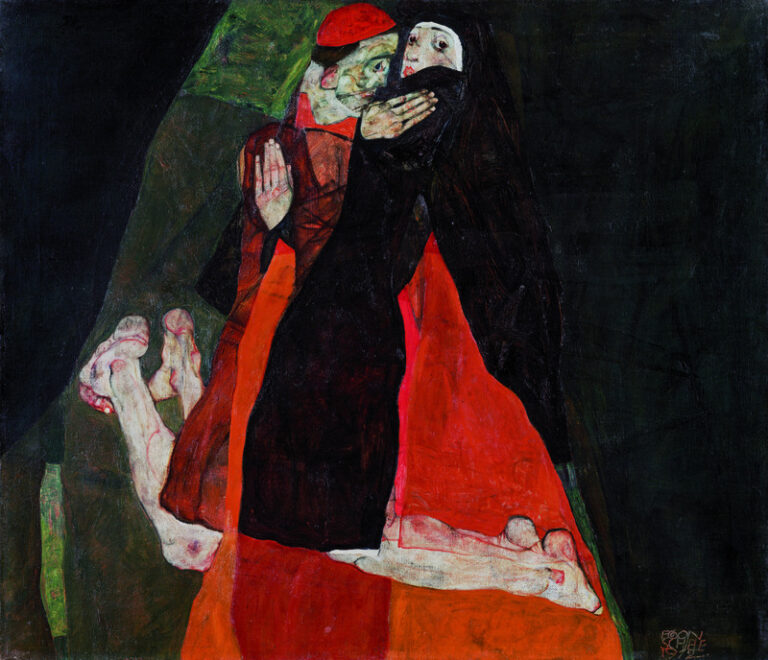In the vibrant world of art, there are countless movements and styles that have captivated audiences throughout time. One such movement that continues to leave an indelible mark on the artistic landscape is Expressionism. Rooted in raw emotion and a desire to convey the complexities of the human experience, Expressionism emerged as a powerful artistic force in the early 20th century. With its bold colors, distorted forms, and intense subject matter, Expressionism sought to challenge traditional artistic conventions and delve deep into the depths of the human psyche.
Expressionism was a revolutionary artistic movement that originated in Germany around 1905, although its influences can be traced back to earlier periods of art history. Its emergence can be seen as a reaction against the prevailing artistic styles of the time, such as Impressionism and Realism, which focused on depicting the external world as accurately as possible. Instead, Expressionists sought to capture the inner world of the artist, portraying their subjective experiences and emotions with intense passion and sincerity.
At the heart of Expressionism lay a desire to break free from the constraints of societal norms and explore the deeper truths of human existence. Artists of this movement delved into their own psyche, often drawing inspiration from personal experiences, dreams, and fantasies. They aimed to evoke powerful emotional responses from their audiences, challenging them to confront the darker aspects of human nature and the complexities of the human condition.
One of the defining characteristics of Expressionism is its bold and striking use of color. Expressionist artists often employed vivid, non-naturalistic hues to convey intense emotions and create a sense of heightened drama. These vibrant colors were not meant to replicate reality but rather to represent the artist’s internal state of mind. By distorting color and form, Expressionists aimed to transport the viewer into a world of heightened emotion and psychological turmoil.
Another characteristic of Expressionism is the use of exaggerated and distorted shapes and figures. Artists sought to convey their inner turmoil and emotional intensity by distorting their subjects’ forms. Faces became contorted, bodies twisted and elongated, and landscapes distorted beyond recognition. The purpose of these distortions was not to depict reality faithfully but to express the artist’s emotional response to the subject matter. In embracing these distortions, Expressionists aimed to tap into the primal and elemental aspects of the human experience.
Expressionism also encompasses a wide range of subject matter, from the deeply personal to the politically charged. Many Expressionist works explore themes of isolation, anxiety, and alienation, reflecting the tumultuous social and political climate of the early 20th century. Others delve into the complexities of human relationships, depicting the fragile and often fraught nature of human connection. Still, others confront larger societal issues, depicting the horrors of war, poverty, and injustice.
In addition to its impact on the visual arts, Expressionism also extended its reach into other artistic mediums, such as literature, theater, and film. Expressionist literature, for example, sought to capture the emotional essence of human existence through evocative and often disturbing language. Expressionist theater pushed the boundaries of traditional dramatic conventions, experimenting with bold staging, exaggerated performances, and unconventional narratives. Expressionist filmmakers embraced innovative cinematography techniques and narrative structures to convey the emotional intensity of their stories.
The legacy of Expressionism can still be felt in contemporary art and culture. Its impact continues to inspire artists to explore the depths of human emotion, challenge societal norms, and push the boundaries of artistic expression. The bold use of color, the distortion of form, and the exploration of the human psyche that characterized Expressionism have become integral elements of artistic practice.
In this comprehensive guide, we will delve deeper into the world of Expressionism, exploring its historical origins, its key artists and artworks, and its lasting impact on the world of art. Whether you are a seasoned art enthusiast or simply curious about this influential movement, join us as we embark on a journey through the rich and evocative world of Expressionism.
The Origins of Expressionism
Expressionism emerged as an artistic movement in the early 20th century, originating primarily in Germany. It is important to understand the historical and cultural context in which Expressionism developed to grasp the motivations behind this distinctive artistic style.
A Reaction to Traditional Art
Expressionism was a reaction against the prevailing artistic norms of the time, particularly the academic traditions of the late 19th century. Artists felt constrained by the strict rules and conventions of the academies, which emphasized realistic representation and idealized beauty. Expressionists sought to break away from these traditions and explore new avenues of artistic expression.
The Influence of Symbolism, Fauvism, and Post-Impressionism
Expressionism drew influences from various earlier movements, including Symbolism, Fauvism, and Post-Impressionism. Symbolism, with its emphasis on subjective and dreamlike imagery, played a significant role in shaping the emotional and psychological elements of Expressionism. Fauvism’s intense use of color and bold brushwork also resonated with Expressionist artists, who sought to convey their innermost emotions through vibrant and non-naturalistic color choices. Post-Impressionism introduced a departure from realistic representation and embraced more subjective and personal interpretations of the subject matter. These influences provided the conceptual foundation for Expressionism to flourish.
Sociopolitical Background
The socio-political climate of Germany at the beginning of the 20th century greatly influenced the development of Expressionism. The country was undergoing rapid industrialization and urbanization, resulting in profound social and cultural changes. Many Expressionist artists responded to these changes by exploring profound feelings of alienation, anxiety, and disillusionment. They used their art as a means of expressing their personal experiences and criticisms of a rapidly changing society.
Primitivism and Non-Western Influence
Expressionism also drew inspiration from non-Western art forms, particularly African and Oceanic art. The simplified forms, raw energy, and spiritual connectedness found in these art traditions resonated with Expressionist artists, who sought to capture the essence of human emotion and primal instincts in their work. The pursuit of a more spiritual and authentic representation of the human condition led many Expressionists to embrace primitivism, rejecting the artificiality and materialism of modern civilization.
The Bridge and The Blue Rider
Two important groups, Die Brücke (The Bridge) and Der Blaue Reiter (The Blue Rider), emerged as central movements within Expressionism. Die Brücke, founded by Ernst Ludwig Kirchner, Karl Schmidt-Rottluff, and Erich Heckel, among others, sought to create a raw and unfiltered artistic expression that reflected the anxieties and chaos of the modern world. Similarly, Der Blaue Reiter, led by Wassily Kandinsky and Franz Marc, aimed to create a spiritual and emotional art that transcended the material world.
In conclusion, Expressionism arose as a response to the restrictive academic traditions of the late 19th century and the socio-political changes in early 20th-century Germany. The movement drew influences from Symbolism, Fauvism, and Post-Impressionism, as well as non-Western art forms. The exploration of human emotion, a rejection of materialism, and a desire for spiritual authenticity were central to the origins of Expressionism. The establishment of Die Brücke and Der Blaue Reiter further solidified the movement’s significance and provided a platform for Expressionist artists to pursue their artistic vision.
Key Characteristics of Expressionist Art
Expressionism is known for its unique and distinct artistic style, which emerged in the early 20th century as a response to the fast-changing social and political landscape of the time. This art movement sought to convey deep emotions, individual experiences, and the inner turmoil of the human condition. Here are some key characteristics that define expressionist art:
- Subjective and Emotional: Expressionist artists aimed to express their innermost feelings and emotions through their artwork. They sought to evoke a strong emotional response from the viewer by portraying intense and often raw emotions such as fear, anger, and anxiety. The artwork often reflects the artist’s personal experiences and struggles, providing a highly personalized representation of the world.
- Bold and Distorted Forms: Expressionists rejected traditional notions of realistic representation and instead favored exaggerated and distorted forms. Artists sought to convey a sense of emotional intensity and turmoil through the use of bold brushstrokes, exaggerated shapes, and exaggerated colors. The goal was to emphasize the emotional impact and create a heightened sense of drama and intensity in the artwork.
- Vivid and Expressive Colors: Expressionist artists often used vibrant and non-naturalistic colors to heighten the emotional impact of their work. The color palette was chosen to evoke specific emotions and create a visual impression that resonated with the viewer. Bright and intense colors were often used to symbolize emotions or mood, while darker and somber tones were used to convey a sense of melancholy or unease.
- Subject Matter and Themes: Expressionist art often dealt with themes of alienation, angst, isolation, and the darker aspects of human existence. Artists conveyed a sense of social criticism and disillusionment with the world around them. They aimed to challenge traditional norms and express their dissatisfaction with the prevailing social and political systems of the time. The subject matter could range from personal experiences and psychological turmoil to broader issues of society and humanity.
- Gestural and Spontaneous Techniques: Expressionist artists embraced a spontaneous and gestural approach to their artwork. They valued the immediacy and rawness of their artistic expression, often working in a quick and energetic manner. The brushstrokes and mark-making were expressive and visible, reflecting the artist’s emotions and personal response to the subject matter. This gestural approach added an additional layer of emotional depth and intensity to the artwork.
- Rejection of Realism: Expressionist art deliberately moved away from the traditional rules of realistic representation. Artists were more interested in capturing the essence and emotional truth of the subject rather than creating a literal or accurate depiction. This rejection of realism allowed for greater freedom of expression and opened up new possibilities for artistic exploration.
Expressionist art revolutionized the concept of art and paved the way for the development of new artistic movements. The unique and powerful characteristics of expressionism continue to influence contemporary artists, reminding us of the enduring impact of this influential art movement.
Prominent Artists of the Expressionist Movement
The Expressionist movement was characterized by its emphasis on expressing subjective emotions and inner thoughts through art. Many talented artists emerged during this period, each contributing their unique perspective and style to the movement. Here are a few of the most prominent artists of the Expressionist movement:
1. Edvard Munch (1863-1944)
Edvard Munch was a Norwegian painter and printmaker whose work played a significant role in shaping the Expressionist movement. His most famous painting, “The Scream” (1893), is a powerful portrayal of human anxiety and existential dread. Munch often explored themes of love, death, and psychological turmoil in his art, employing bold colors and distorted forms to evoke intense emotional responses.
2. Ernst Ludwig Kirchner (1880-1938)
Ernst Ludwig Kirchner was a German artist and one of the founding members of the Die Brücke (The Bridge) movement, which was closely associated with the Expressionist movement. His work is characterized by vibrant colors, bold brushwork, and a focus on urban life and the human figure. Kirchner’s art often reflected the social tensions and anxieties of the time, capturing the fragmented and disorienting nature of modern society.
3. Wassily Kandinsky (1866-1944)
Wassily Kandinsky, a Russian painter and art theorist, is often regarded as one of the pioneers of abstract art. While he initially relied on figurative representations, Kandinsky gradually moved towards non-representational art, believing that color and form could evoke spiritual and emotional responses in the viewer. His works are characterized by dynamic compositions, bold use of color, and a symbolic language that transcends traditional representation.
4. Emil Nolde (1867-1956)
Emil Nolde was a German-Danish painter and printmaker who played a prominent role in the Expressionist movement. Nolde’s art often embraced vivid colors and spontaneous brushwork, showcasing his fascination with the power of color to convey intense emotions. His works explore a wide range of subjects, including landscapes, portraits, and religious themes, all imbued with a raw and emotional intensity.
5. Franz Marc (1880-1916)
Franz Marc, a German painter and printmaker, was one of the key figures associated with the Expressionist movement. He co-founded the influential group known as Der Blaue Reiter (The Blue Rider) and believed in the spiritual and emotional power of art. Marc was known for his vibrant use of color, particularly his interest in depicting animals as symbols of inner life and spirituality. His work often employed bold, abstract forms to express a sense of harmony between nature and the human spirit.
These artists, among many others, played a crucial role in pushing the boundaries of art and expression during the Expressionist movement. Through their powerful and emotive works, they revolutionized the art world and left a lasting impact on subsequent generations of artists. Their contributions have cemented the Expressionist movement as an essential period in the history of art.
Impact of Expressionism on the Art World
Expressionism emerged as a prominent art movement in the early 20th century, and its impact on the art world cannot be overstated. This avant-garde movement challenged traditional artistic conventions and had a profound influence on the development of modern art. From painting to sculpture, literature to film, Expressionism left an indelible mark on various artistic disciplines.
- Breaking from Realism: Expressionism rejected the objective representation of reality found in Realism and instead focused on the subjective experience of the artist. By distorting shapes, colors, and forms, Expressionists sought to convey emotions and inner states rather than merely depicting outward appearances. This departure from Realism was a fundamental shift that opened the door to new artistic possibilities.
- Conveying Intense Emotions: Expressionism aimed to capture and convey intense emotions, often resulting in artworks that were bold, raw, and highly expressive. Artists like Edvard Munch with his iconic painting “The Scream” and Ernst Ludwig Kirchner with his vibrant cityscapes demonstrated the power of Expressionism in evoking feelings of anxiety, despair, and isolation. The movement placed a strong emphasis on the artist’s personal experience and their ability to express deep emotions through their work.
- Influence on Modern Film: Expressionism had a significant impact on the development of film, particularly in German Expressionist cinema. Directors like F.W. Murnau and Fritz Lang utilized Expressionist techniques such as distorted sets, exaggerated lighting, and dramatic angles to create a visual language that conveyed the characters’ psychological states more effectively. This approach not only influenced German cinema but also left a lasting impression on the film industry worldwide, with Expressionist elements continuing to be utilized in various genres.
- Influence on Literature: Expressionism also had a profound influence on literature, particularly in the form of poetry and drama. Writers such as Georg Trakl and August Stramm embraced Expressionist principles, using bold imagery, fragmented language, and unconventional syntax to convey the turmoil and anguish of the human experience. Expressionist literature sought to capture the inner world of the individual, pushing the boundaries of traditional narrative and exploring themes of alienation, existentialism, and social critique.
- Impact on Abstraction: Expressionism played a significant role in the development of abstract art. The movement’s emphasis on subjectivity and emotional expression paved the way for artists to explore non-representational forms. Expressionist artists like Wassily Kandinsky and Franz Marc experimented with abstraction, rejecting the need for recognizable subject matter and instead focusing on color, line, and form as vehicles for emotional and spiritual expression. Their innovative approaches laid the foundation for later abstract art movements.
In summary, Expressionism left a lasting impact on the art world by challenging traditional artistic conventions and emphasizing subjective experience and emotional expression. It influenced various artistic disciplines, from visual arts to literature and film, and paved the way for the development of abstract art. The movement’s bold and raw style continues to captivate and inspire artists today, making Expressionism a critical chapter in the history of modern art.
Continued Influence of Expressionism Today
Expressionism, despite emerging as an artistic movement over a century ago, continues to exert a profound influence on contemporary art and culture. Its impact resonates through various mediums, including painting, sculpture, film, literature, and even performance art. This section explores some of the ways in which expressionism manifests itself in the present day.
1. Visual Arts
Expressionism’s legacy in the visual arts is visible in the works of numerous contemporary artists who draw inspiration from the movement. Many artists continue to explore the emotional and psychological aspects of the human experience, using distorted figures, vibrant colors, and exaggerated forms to convey powerful sensations and deep emotions. This continued exploration of the inner self and the expression of subjective realities is a direct homage to the spirit of expressionism.
2. Film
Expressionism’s influence on cinema has been significant, particularly in the genres of horror, film noir, and psychological thrillers. Filmmakers often employ expressionistic techniques to create mood, atmosphere, and psychological tension. Through the use of low-key lighting, distorted sets, and exaggerated performances, they are able to visually represent the inner turmoil of characters and evoke a sense of unease and anxiety in the audience.
3. Literature
Expressionism has also left an indelible mark on literature, with many writers continuing to experiment with the movement’s exploration of the inner self and subjective experience. Through the use of stream-of-consciousness narration, unconventional language, and intense imagery, contemporary authors delve into the depths of human consciousness. In doing so, they capture the essence of expressionism by conveying the raw emotions and thoughts of their characters.
4. Performance Art
Performance art, with its emphasis on self-expression and pushing boundaries, aligns with the core principles of expressionism. Many contemporary performance artists draw inspiration from expressionism in their work, using their bodies as a medium to convey intense emotions and explore personal and societal issues. Their performances often involve physicality, improvisation, and the breaking of conventional boundaries, allowing them to challenge the status quo and create powerful experiences for the audience.
5. Cultural Impact
Expressionism has had a lasting impact on popular culture, permeating various aspects of society. Its influence can be seen in music, fashion, and even advertising. Musicians often evoke a sense of deep emotion and introspection through their lyrics and melodies, drawing inspiration from the expressionistic tradition. In fashion, designers experiment with unconventional shapes and bold colors, creating garments that express individuality and a sense of rebellion. Expressionistic aesthetics are also evident in advertising campaigns where the use of intense imagery and emotional appeal seeks to engage and captivate audiences.
In conclusion, expressionism’s influence endures in contemporary art and culture, manifesting itself in various forms. Whether through visual arts, film, literature, performance art, or popular culture, artists and creators continue to explore the inner self, subjective experience, and the emotive power of artistic expression. Expressionism continues to captivate audiences, stimulate dialogue, and push the boundaries of creative expression even in the present day.

